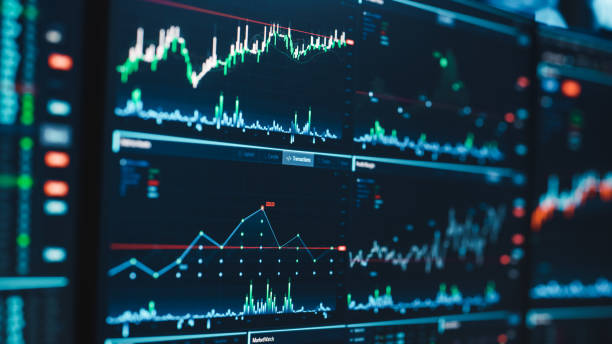What is a Dragonfly Doji?
A Dragonfly Doji is a candlestick pattern that typically indicates a potential trend reversal in the financial markets. It is characterized by a long lower shadow, a small real body, and little to no upper shadow. The opening and closing prices are usually the same or very close to each other, giving the appearance of a “T” or cross shape.
Traders often interpret the Dragonfly Doji as a signal of indecision between buyers and sellers, with neither side able to gain control. This uncertainty can suggest a potential shift in market sentiment from bearish to bullish or vice versa. As with all candlestick patterns, it is important to consider other technical indicators and factors when making trading decisions based on the presence of a Dragonfly Doji.
Characteristics of a Dragonfly Doji
A Dragonfly Doji is a single candlestick pattern characterized by its long lower shadow, open, high, and close prices that are all very close or at the same level. The shape of the candlestick resembles a T-shape or a small cross, with the open and close prices occurring at the high of the trading session. This formation suggests that buyers were able to push the price up from the session low, but the bears managed to bring it back to about the open price by the close of the session.
In technical analysis, a Dragonfly Doji is often interpreted as a potential reversal signal when it appears after a downtrend. It indicates that despite the selling pressure, buyers were able to regain control by the end of the session, leading to a possible reversal in the trend. Traders often view this pattern as a sign of indecision in the market, with the potential for a bullish reversal if confirmed by subsequent price action.
Trade app is a essential tool for traders looking to stay ahead of market trends and make informed decisions. Whether you are a novice trader or an experienced investor, having a reliable trade app like trade app can provide you with real-time market data, analysis tools, and trade execution capabilities. With features such as customizable watchlists, technical indicators, and news alerts, trade app can help you stay on top of market developments and seize profitable opportunities. By utilizing a trade app, traders can streamline their trading process and enhance their overall trading experience.
How to identify a Dragonfly Doji on a candlestick chart
A Dragonfly Doji candlestick pattern can be identified on a candlestick chart by its distinct shape. It typically has a long lower shadow, almost non-existent upper shadow, and a small body situated at the top of the candlestick. This formation resembles the shape of a dragonfly, hence the name.
Traders look for Dragonfly Doji patterns after a downtrend, as this formation suggests a potential reversal in the market sentiment. To spot a Dragonfly Doji, one must observe the open, high, low, and close prices of the candlestick. The open and close prices should be very close to each other, signaling indecision in the market, while the long lower shadow indicates that sellers pushed the price lower during the session but lost control by the end of the period.
The significance of a Dragonfly Doji in technical analysis
A Dragonfly Doji is a significant candlestick pattern in technical analysis, often indicating a potential reversal in market direction. This pattern forms when the open, high, and close prices are all at the same level, creating a small body with a long lower shadow. The long lower shadow suggests that sellers were initially in control but lost momentum, leading to a potential shift in sentiment.
Traders often view a Dragonfly Doji as a signal of possible bullish reversal, especially when it appears after a downtrend. The pattern suggests that despite the initial selling pressure, buyers were able to push the price back up, signaling a potential change in momentum. However, it is important to consider other factors such as volume and confirmation from additional technical indicators before making trading decisions based solely on the presence of a Dragonfly Doji.
Potential implications of a Dragonfly Doji in market trends
A Dragonfly Doji in market trends often indicates a potential reversal of the current price direction. This candlestick pattern suggests that buyers have regained control after a period of selling pressure, leading to a possible shift in momentum. Traders may interpret the appearance of a Dragonfly Doji as a signal to consider long positions or to close out short positions in anticipation of a bullish move.
However, it is important to keep in mind that a Dragonfly Doji on its own is not a definitive indicator of market direction and should be considered within the context of the overall chart pattern and other technical indicators. Traders should look for confirmation from subsequent price action to validate the potential implications of a Dragonfly Doji. Understanding the significance of this candlestick pattern in market trends can help traders make more informed decisions when managing their positions.
How to interpret a Dragonfly Doji in relation to other candlestick patterns
When interpreting a Dragonfly Doji in relation to other candlestick patterns, it is crucial to consider the context in which it appears. For instance, if a Dragonfly Doji forms after a series of bearish candlesticks, it could signal a potential reversal in the market sentiment. However, if it emerges in isolation or amidst a strong uptrend, its significance may be less pronounced.
In addition, comparing the size and location of the Dragonfly Doji relative to surrounding candlesticks can offer valuable insights. A larger Dragonfly Doji that occurs near a key support level may carry more weight than a smaller one that appears in the middle of a trading range. By analyzing the Dragonfly Doji in conjunction with neighboring candlestick patterns, traders can enhance their understanding of market dynamics and make more informed trading decisions.
When interpreting a Dragonfly Doji in relation to other candlestick patterns, it is crucial to consider the context in which it appears. For traders looking to explore different investment strategies, options trading online can provide a unique opportunity to diversify their portfolios and potentially enhance their returns. For instance, if a Dragonfly Doji forms after a series of bearish candlesticks, it could signal a potential reversal in the market sentiment. However, if it emerges in isolation or amidst a strong uptrend, its significance may be less pronounced. In addition, comparing the size and location of the Dragonfly Doji relative to surrounding candlesticks can offer valuable insights. A larger Dragonfly Doji that occurs near a key support level may carry more weight than a smaller one that appears in the middle of a trading range. By analyzing the Dragonfly Doji in conjunction with neighboring candlestick patterns, traders can enhance their understanding of market dynamics and make more informed trading decisions.
Common misconceptions about Dragonfly Doji
One common misconception about Dragonfly Doji is that it guarantees an immediate reversal in the market. While this candlestick pattern does suggest a potential shift in momentum, traders should exercise caution and wait for confirmation from subsequent price action before making any trading decisions solely based on the presence of a Dragonfly Doji.
Another misconception is that the size of the Dragonfly Doji’s shadow is directly proportional to the strength of the impending reversal. However, the length of the shadow alone is not sufficient to determine the significance of this candlestick pattern. It is essential to consider other factors such as the overall trend, volume, and the context in which the Dragonfly Doji appears on the chart to make a more informed analysis.
Tips for trading based on Dragonfly Doji signals
To effectively trade based on Dragonfly Doji signals, it is essential to wait for confirmation before making any decisions. This means that traders should not act solely on the appearance of a Dragonfly Doji but should instead look for confirmation from other technical indicators or candlestick patterns. By waiting for confirmation, traders can reduce the chances of false signals and make more informed trading decisions.
Another important tip for trading based on Dragonfly Doji signals is to pay attention to the overall market context. Understanding the broader market trends and the current market sentiment can help traders better interpret the significance of a Dragonfly Doji. By considering the macroeconomic factors and market conditions, traders can gain a more comprehensive view of the potential implications of a Dragonfly Doji and make more strategic trading decisions.
Real-life examples of Dragonfly Doji patterns in the stock market
In a recent analysis of stock market data, several instances of Dragonfly Doji patterns were observed across various financial instruments. For example, Company ABC’s stock exhibited a Dragonfly Doji pattern on the daily chart after a prolonged downtrend. This pattern signaled a potential reversal in the stock’s price direction, leading to a notable uptick in buying interest among traders and investors.
Similarly, in the cryptocurrency market, Bitcoin displayed a Dragonfly Doji pattern on the weekly chart amidst a period of price consolidation. This pattern suggested indecision among market participants but ultimately led to a bullish breakout, indicating a shift in market sentiment towards the cryptocurrency. Such real-life examples highlight the practical relevance of recognizing and interpreting Dragonfly Doji patterns in trading and investment decision-making.
Conclusion on the importance of understanding Dragonfly Doji candlestick patterns
Understanding Dragonfly Doji candlestick patterns is crucial for traders and analysts in the financial markets. These patterns can provide valuable insights into potential market reversals or indecision among market participants. By recognizing and interpreting Dragonfly Doji formations accurately, traders can make more informed decisions when it comes to entering or exiting trades, managing risk, and maximizing profits.
Incorporating Dragonfly Doji patterns into technical analysis can enhance a trader’s ability to gauge market sentiment and anticipate changes in price direction. These candlestick formations offer a snapshot of the balance between bullish and bearish forces, allowing traders to stay ahead of market trends. By studying and applying the principles of Dragonfly Doji patterns, traders can develop a more comprehensive trading strategy that takes into account both price action and market psychology.




